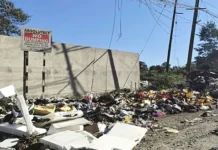[ Ranjit Sinha ]
Arunachal Pradesh, being a developing state and a late starter, needs effective coordination between various departments for implementation of flagship programmes of both the state and the central governments. This is evident from the Beti Bachao Beti Padhao Abhiyan, the anti-narcotic scheme, and the National Bamboo Mission, to name a few, which involve many government departments, like women & child development, health & family welfare, police, forest, general administration, and other stakeholders for their implementation in the true sense.
Apart from this, the health, agriculture, water resources, education, skill development and other departments have to come closer for fruitful implementation of the aspirational district programme for Namsai – the lone district in Arunachal Pradesh which finds a place in the NITI Aayog’s list of backward districts – to bring about rapid transformation in terms of basic amenities, infrastructure facilities, health facilities, standards of living, etc.
Similarly, in order to make Arunachal Pradesh the number one hotspot in the country for tourists from abroad and within the country, the tourism department needs cooperation from not only the government approved travel agents and the people but also from other government agencies. This would help the department in exploiting the tourism potential of the ‘Land of the Rising Sun’ that is Arunachal Pradesh.
There is no denying the fact that the research department, with its minimal staff, is not only conducting erudite research on archaeological sites of the state and the culture and history of the different indigenous tribes, it is also expanding its sphere of activities in new areas by publishing numerous books which will surely expunge the wrong notions that the mainstream people of India entertain about Arunachal Pradesh, besides attracting more tourists to the state.
The research department has around 200 books to its credit so far, the latest among them are Understanding Arunachal Pradesh, Economic Pursuits among the Tribes of Arunachal Pradesh, Folktales of Arunachal Pradesh, and Udita Surjyer Deshe (In the Land of Rising Sun). These books reflect a developing Arunachal with renewed zeal, which will surely help lure tourists from across the country and abroad.
Udita Surjyer Deshe, written in Bengali by the department’s research officer RN Koley, deserves special mention. It is the only book written in the Bengali language which briefly but vividly describes every aspect of Arunachal, including its scenic beauty, tourism potential, historical monuments, archaeological findings, beliefs and faiths, cultural unity and festivals, and the traditional handicrafts of its different tribes.
Koley, with his in-depth knowledge about the landscape of Arunachal Pradesh, its indigenous people, and their culture, also elaborately describes the places of tourists’ interest in his book, right from Tawang to Pangsau Pass.
The must-read book for Bengali, and Bengali-speaking people, which is a rare publication of the research department on behalf of the state government, will surely serve as a tourist guide also, particularly for the Bengali globetrotters in the country and abroad who visit Arunachal Pradesh with an urge to mingle with nature.


